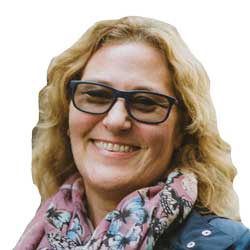In the frame: damp and mould
AI could transform the way social housing providers deal with one of their biggest issues
If collaboration is key to delivering better AI projects, then Jo Sedley-Burke’s work with the University of Essex shows how it can address one of the sector’s defining problems. Following on from the work of the university’s senior AI lecturer, Dr Haider Raza, on the early detection of skin cancer through machine learning analysis of photos, Sedley-Burke, an associate consultant at Campbell Tickell, thinks the same model could easily be applied to the treatment of damp and mould in social housing.
AI as a life-saver
“It uses millions of images to identify what is and isn’t serious,” Sedley-Burke says, describing the skin cancer project, which Dr Raza revealed during an AI-focused Campbell Tickell webinar has hit 83% accuracy when it comes to detection. “It can then make recommendations in relation to treatment escalation. I see this as an area for social housing, particularly around damp and mould.”
Working off pictures from smartphones uploaded to an AI-driven app, Dr Raza believes that his skin cancer project could save lives, given the importance of early detection when it comes to melanoma. And Sedley-Burke sees a parallel opportunity to revolutionise the detection and diagnosis of damp and mould in social housing.
“So we know many of us have this issue,” she tells the same webinar. “We don’t know whether it’s caused by lifestyle, but actually, damp and mould has quite unique imaging [and] there is a lot of it around the world.
“And if we’re taking photos of it and then saying, actually, the outcome of this kind of mould was this sort of outcome, it’s not going to take long before we can identify what the correct action should be and how we advise the resident. We can also link it all in with the property, so that if we know that we’ve got X number of properties that might have different addresses, but they’re the same age, have the same windows, the same whatever it is, then we can tie that together.”
The potential to improve damp and mould detection and treatment is just one of a number of potential AI use cases that could come out of the work with the University of Essex, with anti-social behaviour and repairs being among the other areas Sedley-Burke believes could also be transformed. But she adds that landlords might need to overcome some fears if they are to unleash the potential of the AI revolution.

Jo Sedley-Burke
Associate Consultant, Campbell Tickell
“If we’re taking photos of it and then saying, actually, the outcome of this kind of mould was this sort of outcome, it’s not going to take long before we can identify what the correct action should be and how we advise the resident.”

Jo Sedley-Burke
Associate Consultant, Campbell Tickell
“If we’re taking photos of it and then saying, actually, the outcome of this kind of mould was this sort of outcome, it’s not going to take long before we can identify what the correct action should be and how we advise the resident.”
Risk aversion
“Social housing providers are quite risk averse,” she continues. “That’s because fundamentally it’s residents’ money, and so they need to be able to justify that spending to the board and assess the outcomes of any project.”
Sedley-Burke’s answer to this understandable problem of risk aversion is that organisations should be more willing to work together on solutions, particularly on something like damp and mould, where processes are becoming increasingly standardised.
“A lot of organisations do work already together, and while they tend to have differences in some of their internal processes, most people have the same process to deal with damp and mould. They carry out an inspection and have to make an assessment as to what the next action is going to be. It’s very process-driven.”

“It’s just knowing how and where to spend the money – that’s where the challenge is.”
Transforming procedures
And for an issue that is one of the hot topics for the sector – and one for which it faces plenty of criticism – the effect of changing how the industry deals with damp and mould could be truly transformative.
“At the moment, residents are phoning up saying they’ve got a damp and mould problem,” says Sedley-Burke. “A surveyor might go out and look at it. They might think okay, well, let’s treat that with some wash first, clean it, do a wash. But actually, if it’s coming from a problem within the building as opposed to a lifestyle issue, the treatment is going to be very different. So [it’s about] speeding up that process.”
The ability for an AI to pull together data on stock condition, ventilation, heating systems, window types and plenty of other variables, and combine that with a database of images of damp and mould would revolutionise this process. “It would be able to predict and analyse where you go from there, and whether there’s something that needs to be dealt with within that building before it gets too late,” she explains.
Sedley-Burke acknowledges that the type of change – at scale – that AI could bring about will require both investment and buy-in from key decision-makers. But she thinks the tide is turning: “I think people as individuals at the C suite level and in senior management teams are now seeing that machine learning would be able to assist them,” she says. “It’s just knowing how and where to spend the money to actually kind of get a better service – that’s where the challenge is.”

